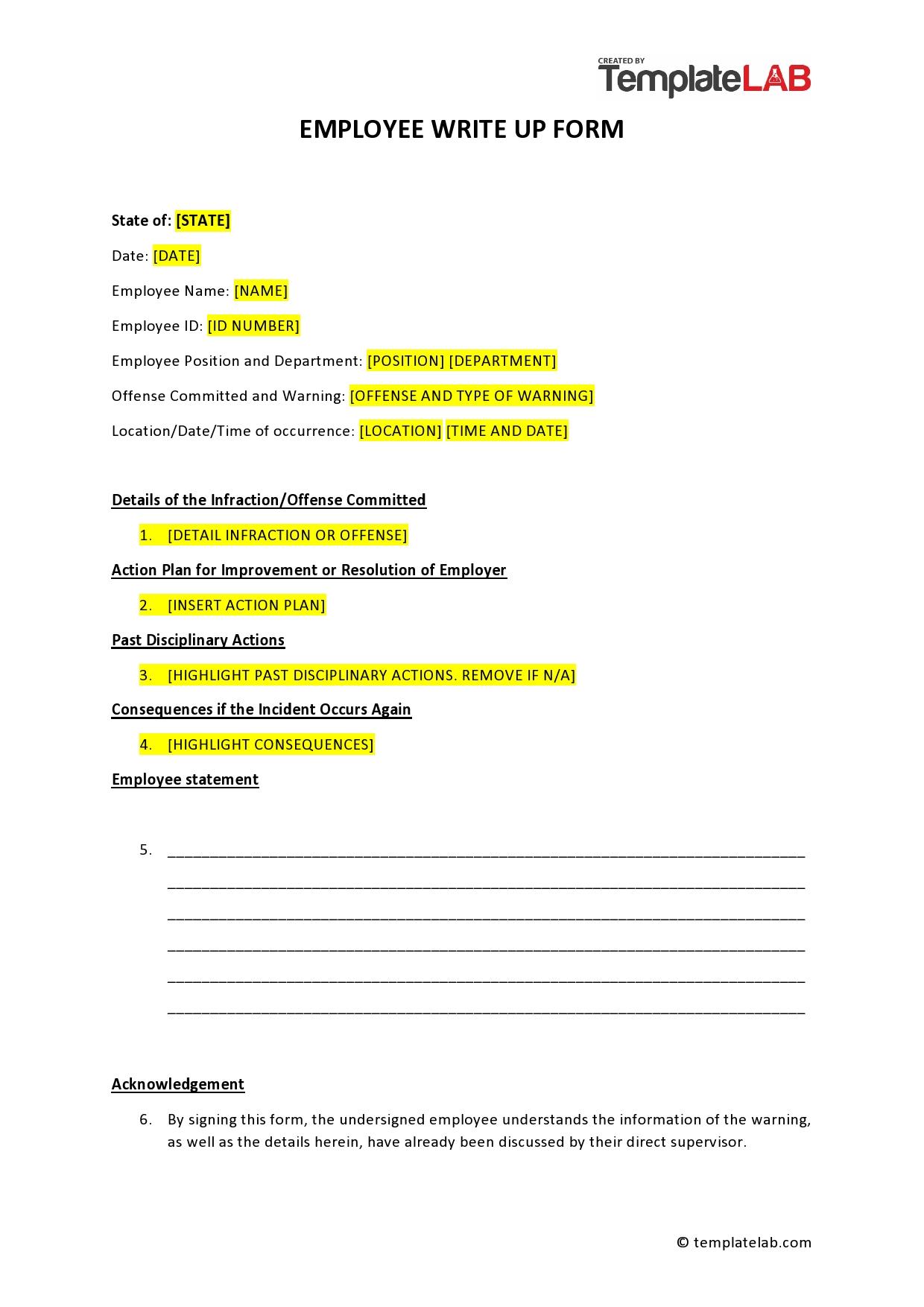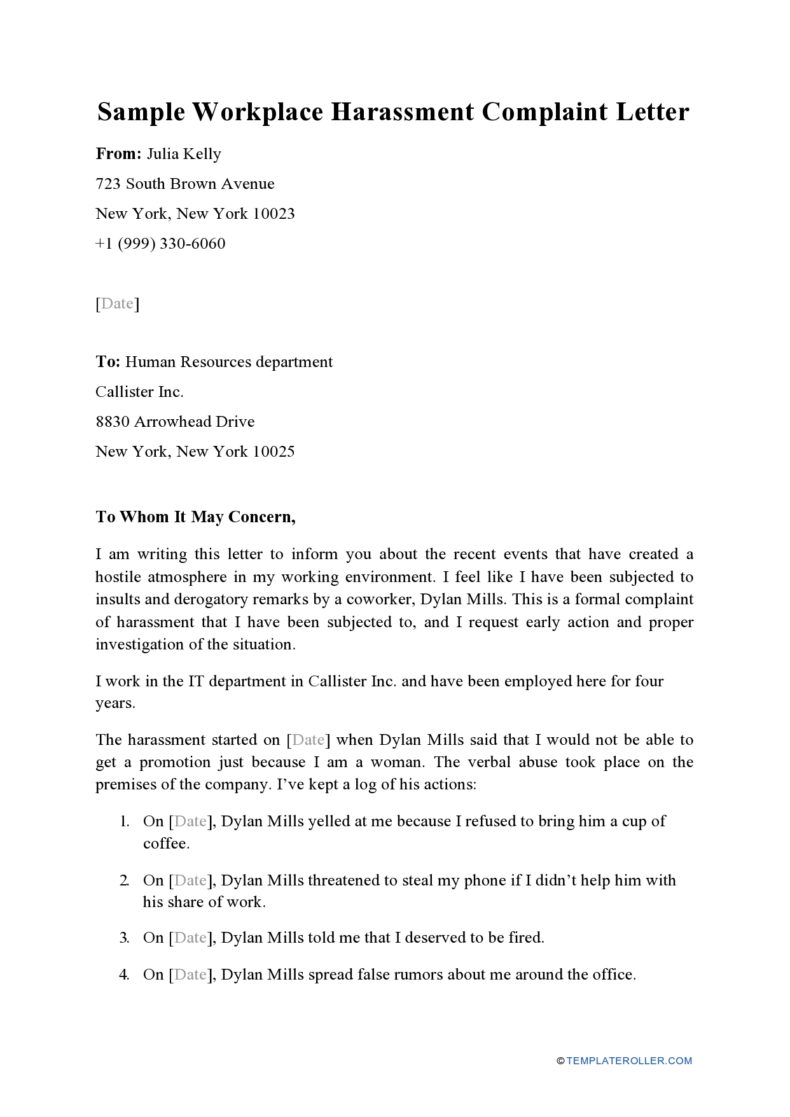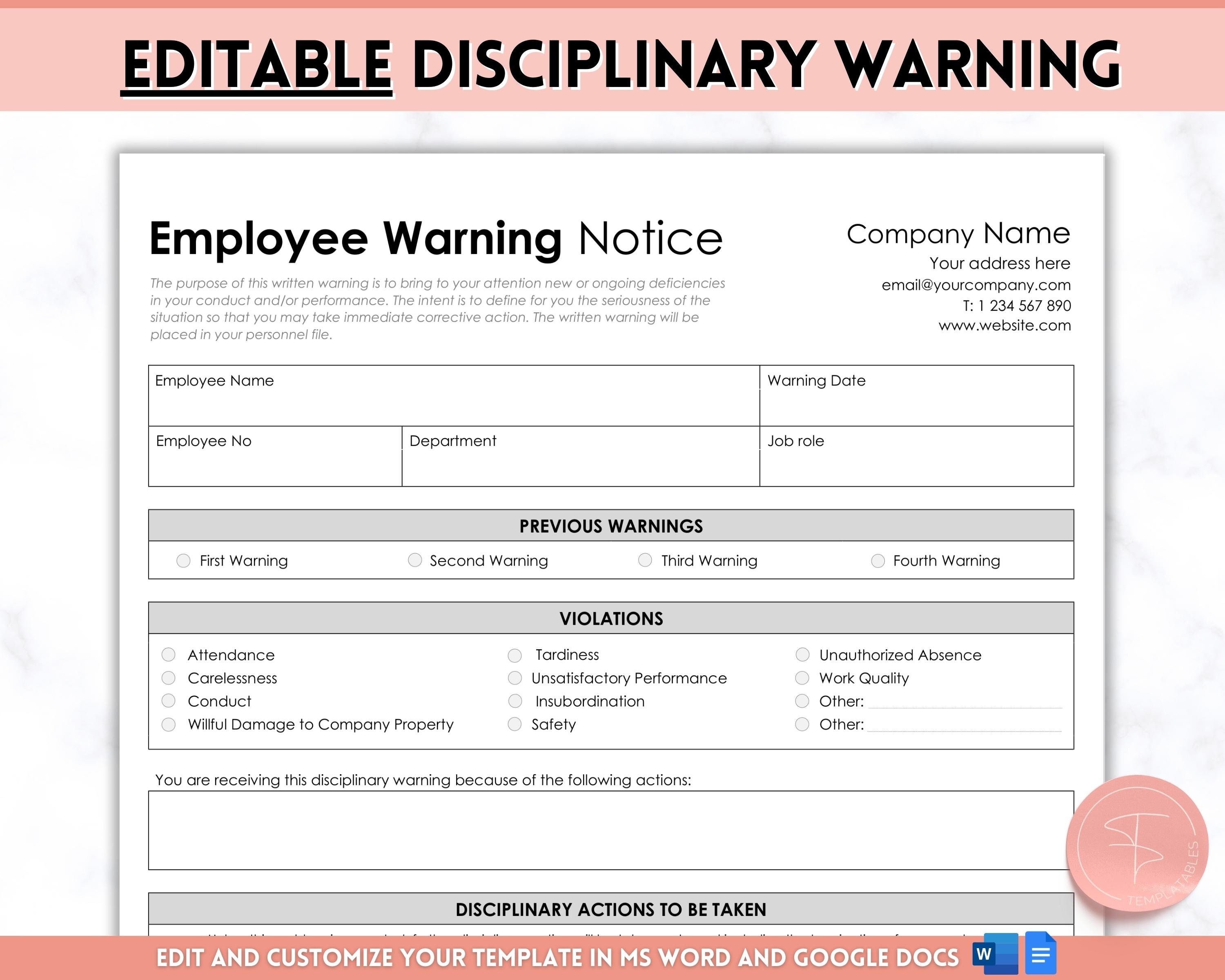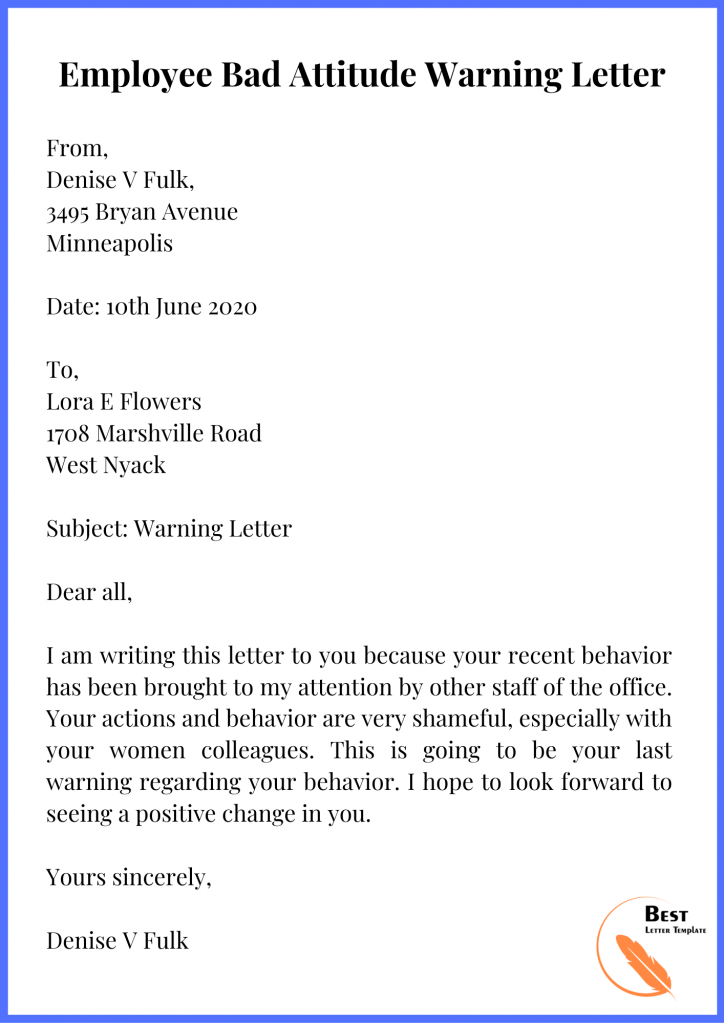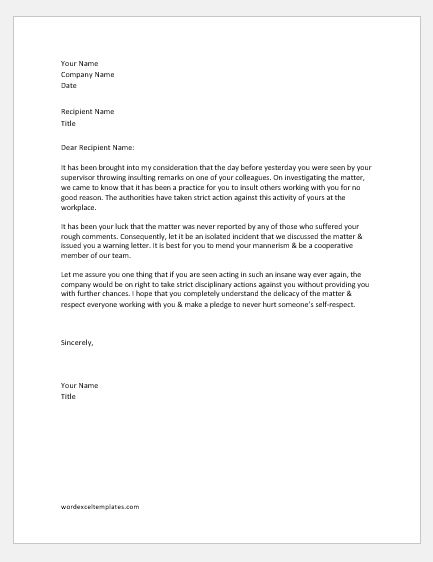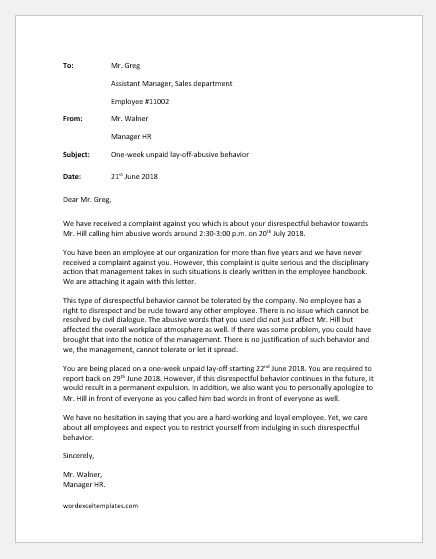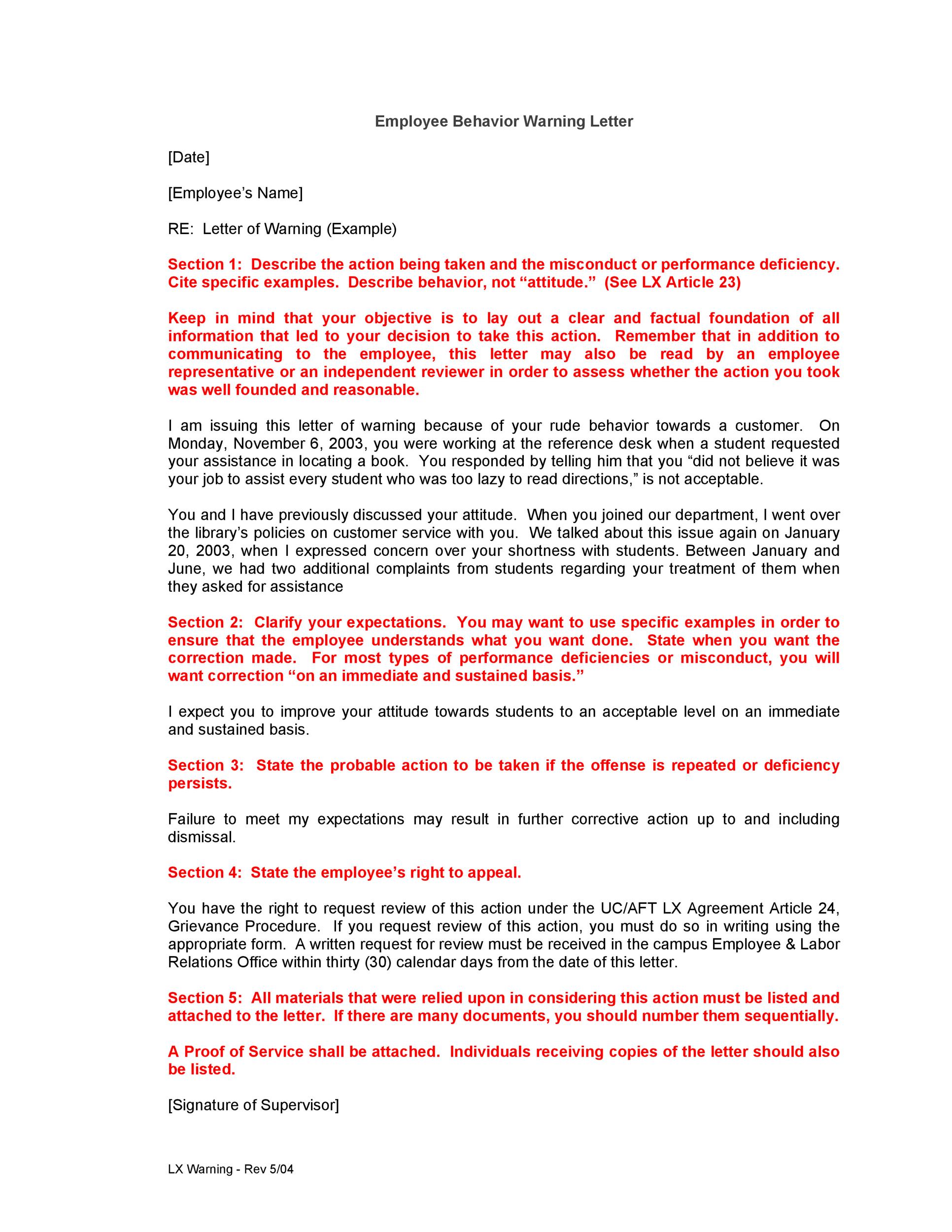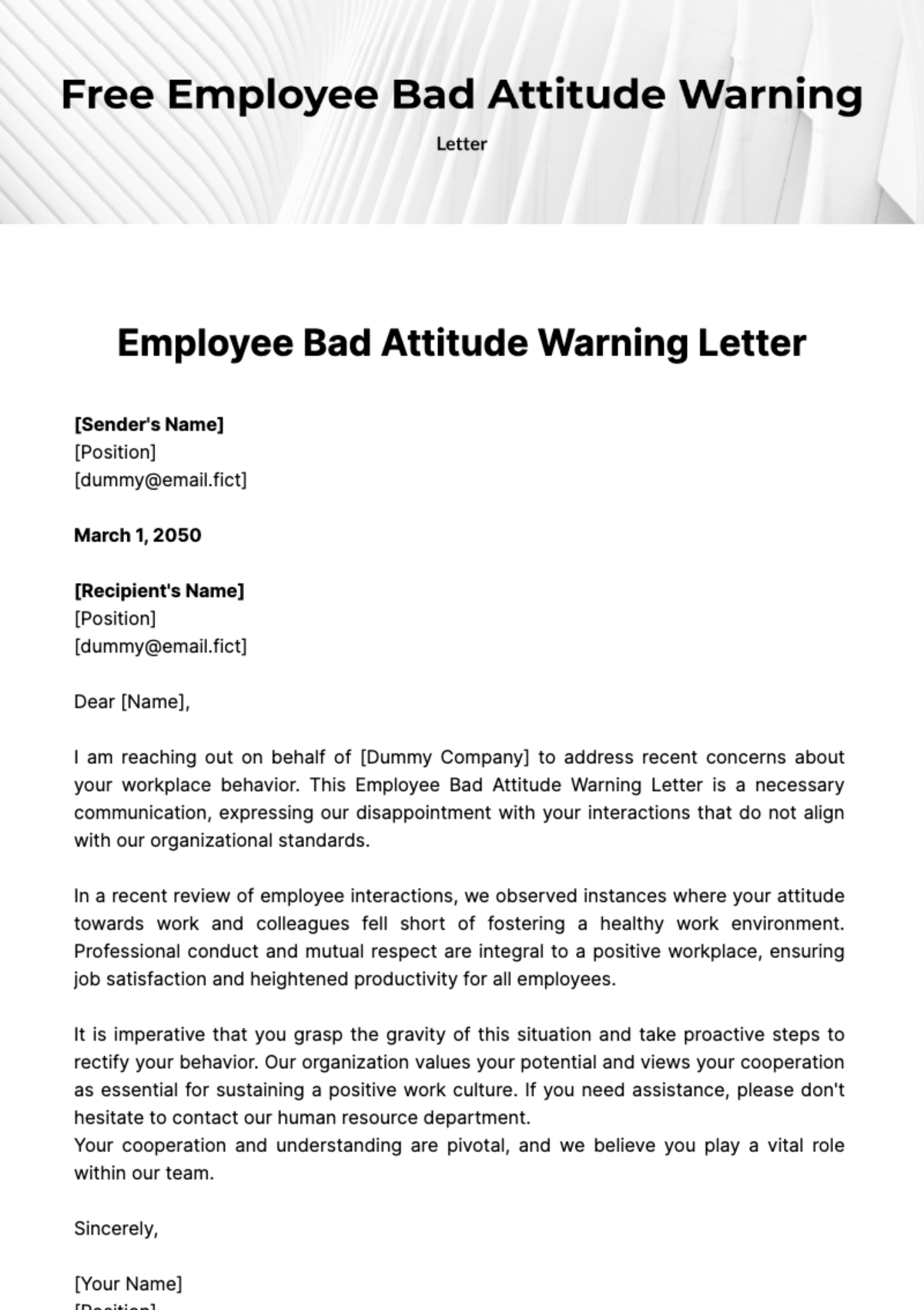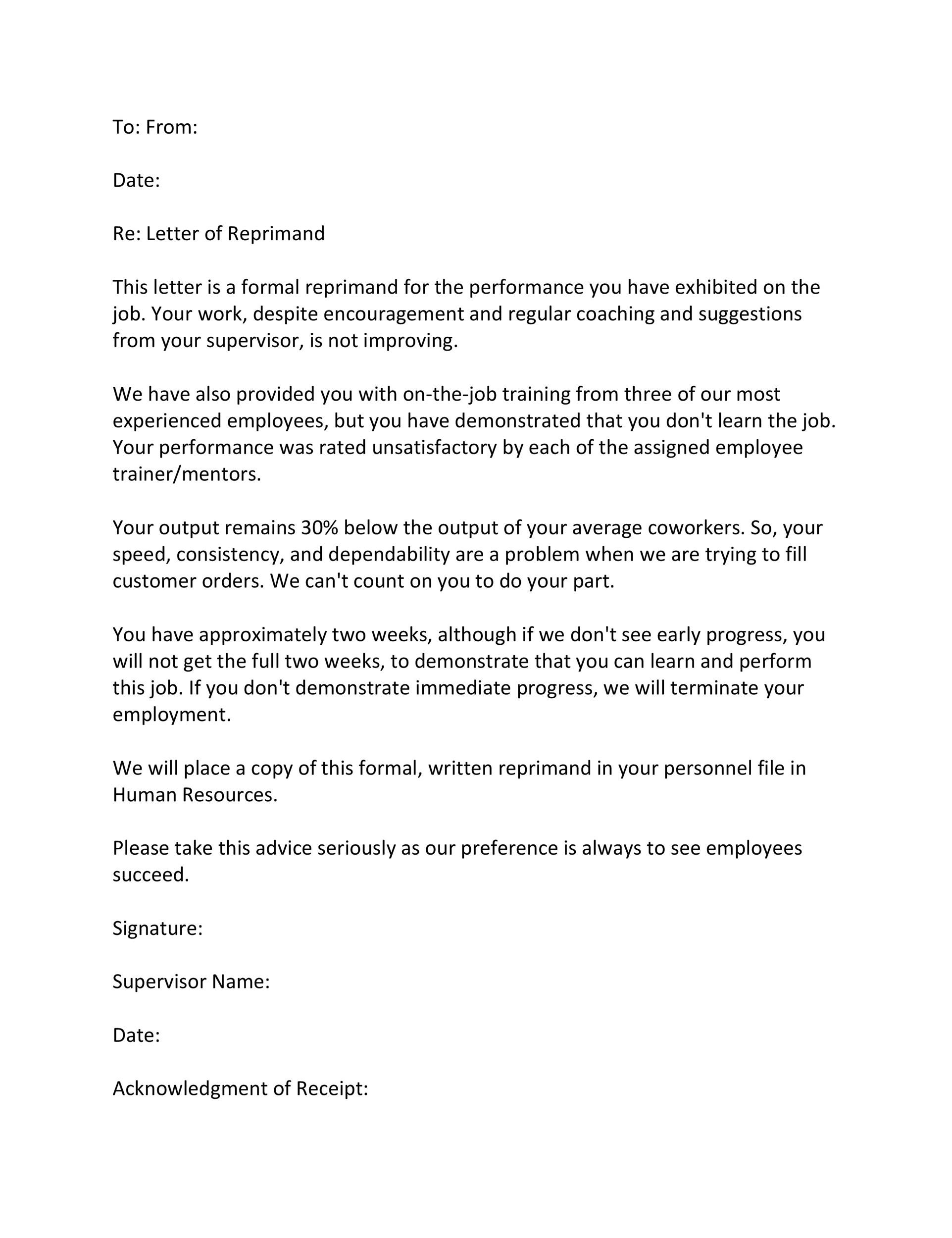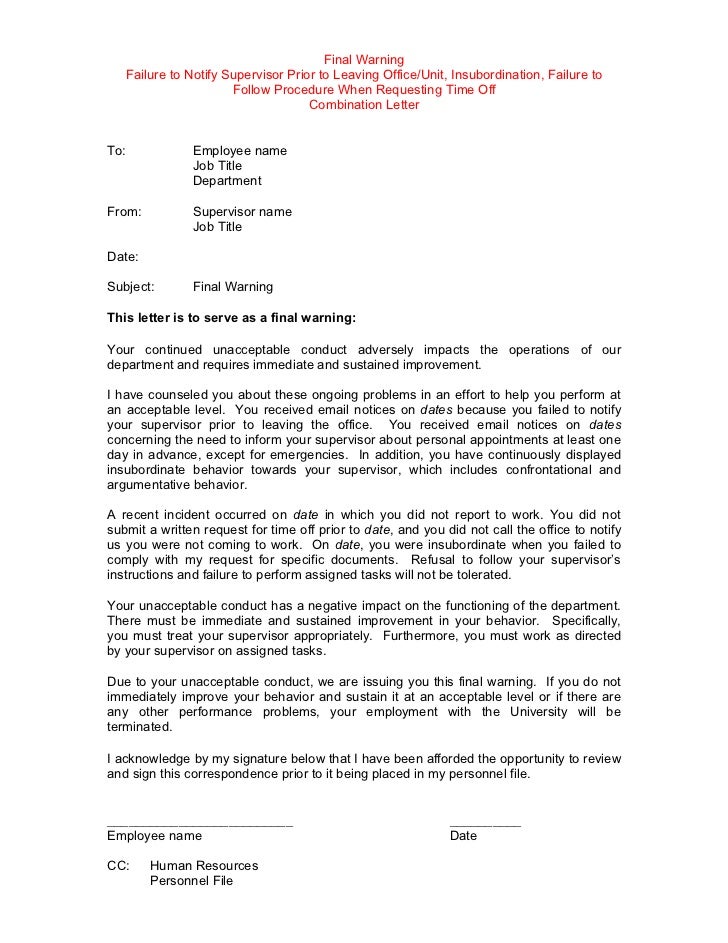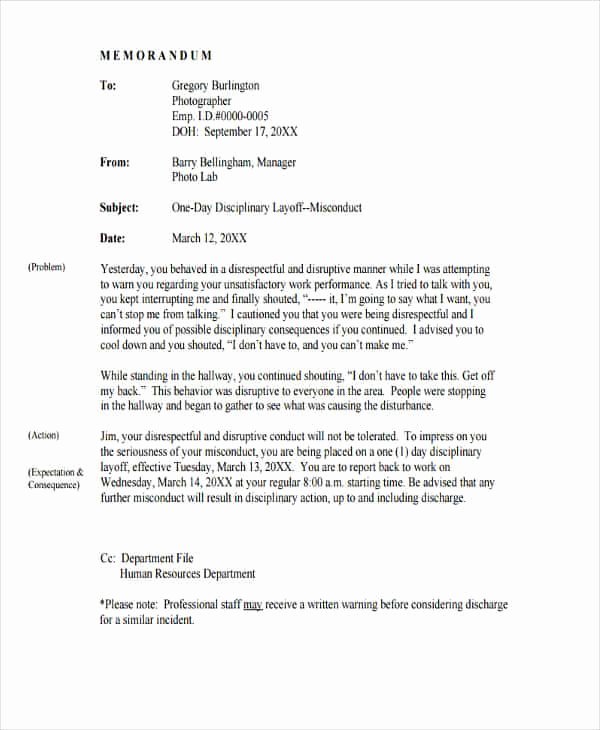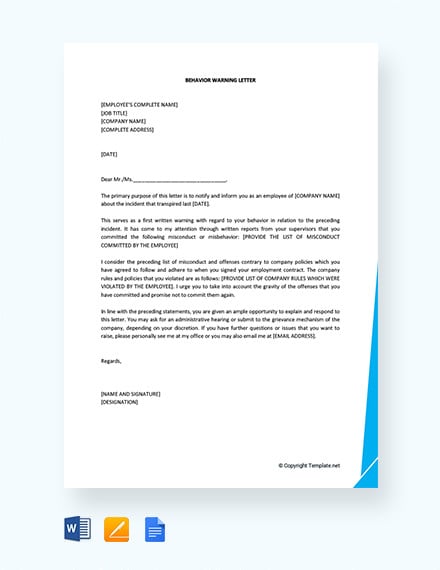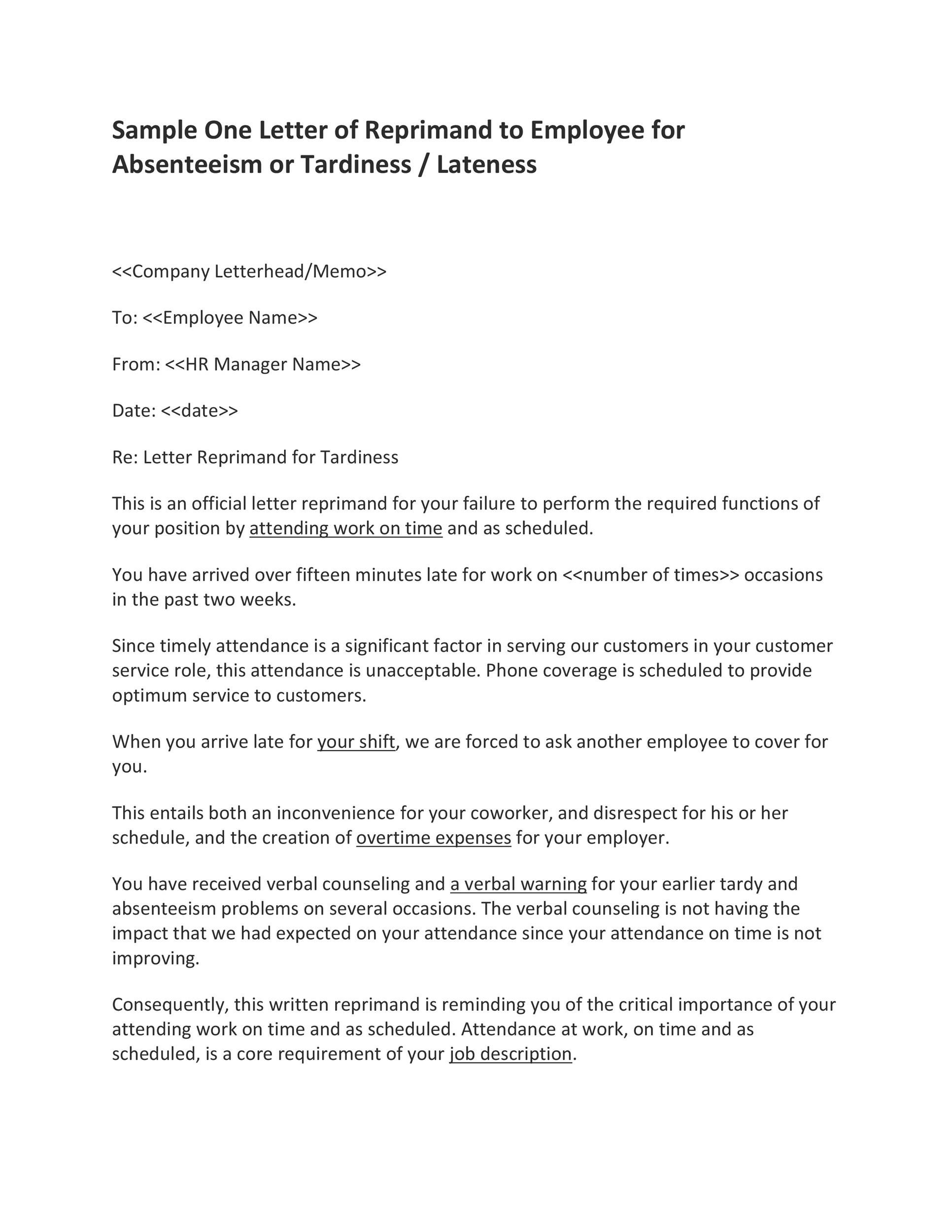How To Write Up An Employee For Disrespect
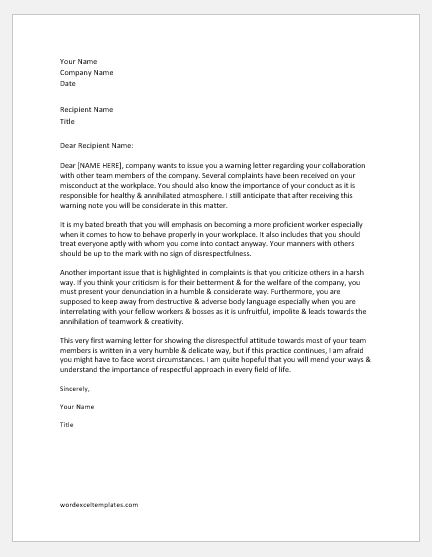
The sting of disrespect in the workplace can be a morale killer, poisoning team dynamics and impacting productivity. Addressing such behavior head-on, however, requires a delicate balance of sensitivity and firmness. Companies must navigate the process meticulously to ensure fairness and avoid potential legal pitfalls.
Crafting a formal write-up for disrespect demands a well-defined strategy and a thorough understanding of company policy. It also requires an unwavering commitment to due process. This article provides a comprehensive guide on how to effectively document and address disrespectful conduct in the workplace.
Identifying and Documenting Disrespectful Behavior
Disrespect can manifest in various ways, from insubordination and verbal abuse to undermining authority and spreading rumors. Company policies should clearly define what constitutes unacceptable behavior.
Document every incident meticulously, noting the date, time, location, and individuals involved. Provide specific examples of the disrespectful behavior, avoiding generalizations.
Gather supporting evidence, such as emails, witness statements, or recordings (where legally permissible). Objectivity is paramount; stick to the facts and avoid subjective interpretations.
The Importance of a Thorough Investigation
Before issuing a formal write-up, conduct a thorough investigation to understand the context and gather all relevant information. This shows the company takes such issues seriously.
Interview the employee accused of disrespect, providing them with an opportunity to explain their perspective. Listen attentively and document their response accurately.
Speak to witnesses to corroborate the allegations and gain a broader understanding of the situation. Ensure all parties involved understand the confidentiality of the investigation.
Crafting the Write-Up: Key Elements
A well-written disciplinary notice should clearly outline the specific policy violations. It also should address the consequences of continued misconduct.
Begin by stating the purpose of the write-up and the date it is being issued. Clearly identify the employee and their position within the company.
Describe the specific incidents of disrespectful behavior, referencing the documented evidence gathered during the investigation. Be specific about which company policy the behavior violates.
Outline the expected behavioral changes and set clear expectations for future conduct. State the consequences of failing to meet those expectations, such as further disciplinary action or termination.
Include a statement that the employee has the opportunity to respond to the write-up and provide additional information. Allow them to sign the document, acknowledging receipt (not necessarily agreement).
Delivering the Write-Up and Follow-Up
Schedule a private meeting with the employee to deliver the write-up. This provides an opportunity for a direct, respectful conversation.
Present the write-up calmly and professionally, explaining the reasons for the disciplinary action. Allow the employee to ask questions and express their concerns.
Document the meeting, including the date, time, participants, and a summary of the discussion. This helps protect the company.
Following the write-up, monitor the employee's behavior and provide regular feedback. This helps support positive change.
If the disrespectful behavior persists, escalate the disciplinary action as outlined in company policy. Consistent enforcement is crucial.
Legal Considerations and Best Practices
Consult with legal counsel before issuing a formal write-up, especially in cases involving protected characteristics or potential legal claims. This helps minimize risk.
Ensure that the disciplinary process is applied consistently across all employees, regardless of their position or background. This prevents discrimination.
Maintain accurate and confidential records of all disciplinary actions. This helps the company build a defense in case of litigation.
Consider offering training on respectful workplace conduct to all employees. Proactive measures can prevent problems.
According to the Society for Human Resource Management (SHRM), a strong anti-harassment and anti-discrimination policy, coupled with consistent enforcement, is crucial for fostering a respectful work environment. Many employers are moving toward more robust training programs.
Looking Ahead: Fostering a Culture of Respect
Addressing disrespectful behavior through formal write-ups is only one piece of the puzzle. Creating a culture of respect requires a holistic approach.
Companies should prioritize open communication, active listening, and empathy. These promote understanding.
By fostering a culture where respectful behavior is valued and expected, organizations can minimize the need for disciplinary action. This creates a positive and productive environment for all.

